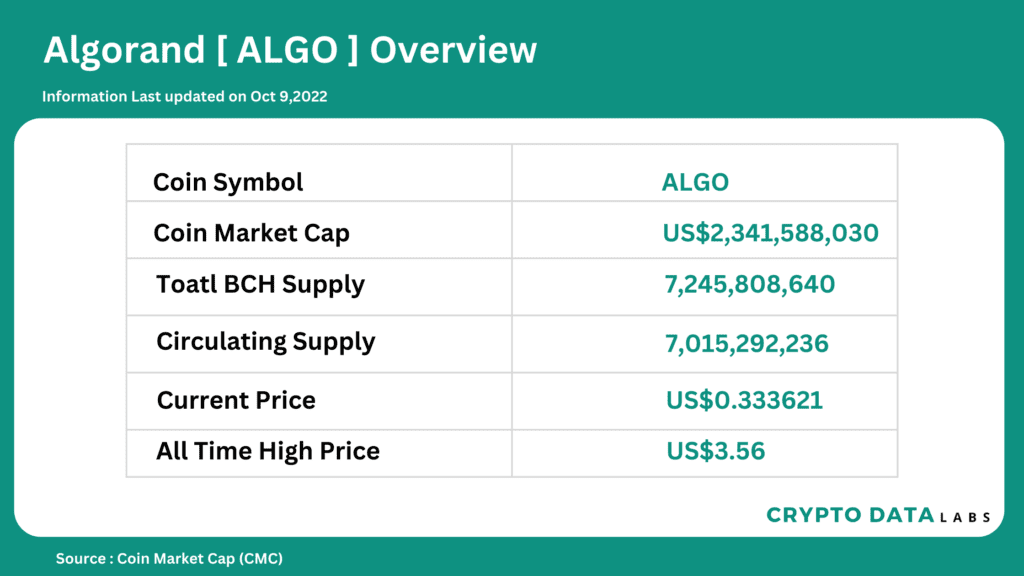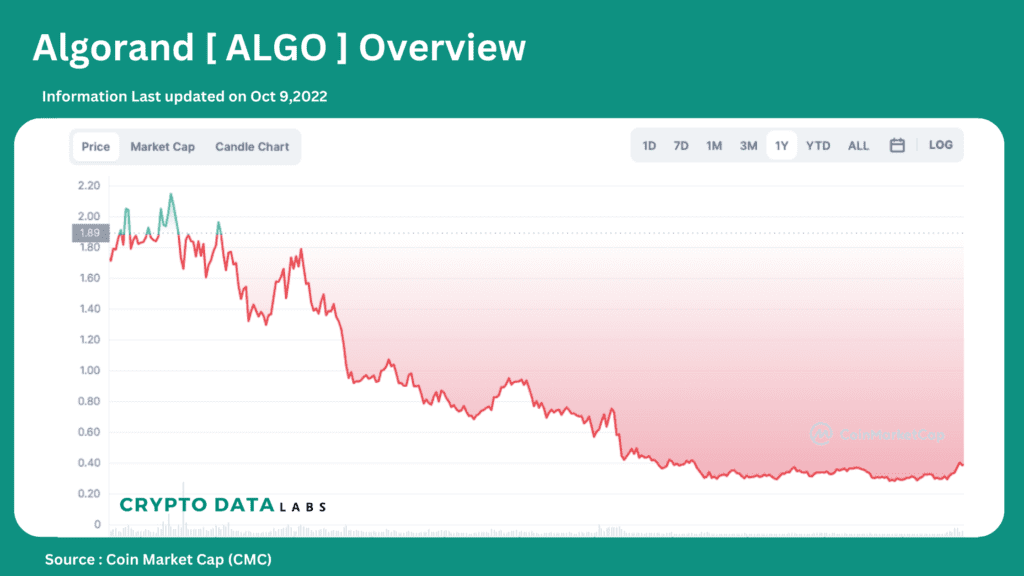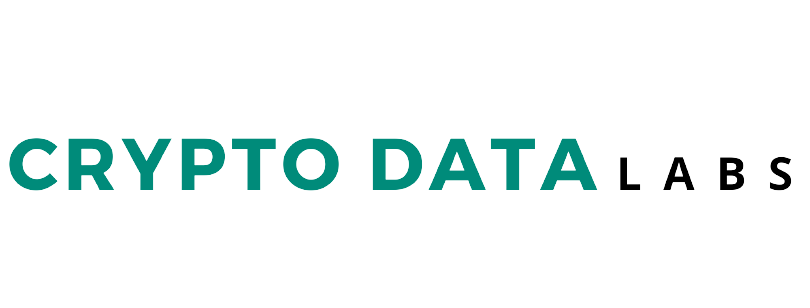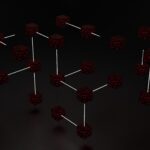The Algorand Foundation, a non-profit organization, believes in the open, public, and permissionless blockchain. It was established to address the most significant problem with blockchain, the “blockchain trilemma”. Algorand was created to solve the biggest problem with blockchain – the “blockchain trilemma”. It was impossible to achieve the three elements – pure decentralization and scalability as well as the layers of security promised by blockchain – on a single platform. Algorand was created in 2019 to offer open-source public cryptocurrency. It also has a protocol with an internal Pure Proof-of-Stake Protocol (PPOS). This protocol facilitates decentralized finance. It focuses on transparency and permissionless access to data, instant authentication, and scalable transaction management.
Blockchain technology
Before we dive into Algorand let’s first understand What is Blockchain? This is the technology on which Algorand is based.
Blockchain is simply a sequence of blocks that are time-stamped and contain digital information. These blocks can be stored in a shared database using cryptographic principles, or “chain”. The information is divided into three parts: transaction information, transaction participant data, and special information (hash), which distinguishes blocks from one another.


These are the theoretical characteristics of its particular characteristics:
Decentralized Network
A cluster of computers running independently and acting on a peer-to-peer basis controls the blockchain ledgers.
Distributed ledger
The block, which contains information, is then checked by millions of computers distributed across the network. Once verified, it is added to the “chain” to allow for each transaction to be completed. These verification nodes are known as “miners” and the process is called “mining”.
Cryptographic Security:
Every member of a blockchain has a public key that is visible to all members. The member’s identity will be concealed by a unique obfuscation known as a “digital signature”. This can only be deciphered by the owner with the private key he/she was given at registration. It is almost impossible to hack identities or compromise data with this cryptographic security of user access.
Immutability:
Blockchain only supports “create” and “read” functions. This means that if one block’s data changes, all subsequent blocks will also change, and the entire network is notified. A “block” is information that is added to a blockchain is permanent.
Data source:
Only the owner can change the ownership of a digital asset that is registered on a blockchain. The origins of digital assets can be traced and are therefore verifiable. They can also be reused.
Transparency:
Every node point on a blockchain holds a copy of the entire history of all transactions. This means that all data can be found simultaneously at multiple locations in the network. This decreases the chance of data being lost.
The most common Proof-of-work method and its challenges
Since the inception of blockchain, all the most popular cryptocurrencies like Bitcoin and Ethereum use Proof-of-Work consensus algorithms. Blockchain uses a consensus algorithm to verify transactions and add new blocks to its chain. PoW is a competition between currency miners to solve complex mathematical problems. The winner gets rewarded for finding the fastest solution.
It offers many benefits, including reducing the gap between rich and poor by encouraging the ability to solve a puzzle instead of having lots of money. Also, it is extremely secure due to the complexity of the generated hash functions.
However, transactions in this consensus can take a while to complete, especially when there are forks (tie in solving a puzzle). Complex algorithms require highly skilled computer hardware, which in turn consumes a lot of energy and can be expensive. This is not only dangerous for the environment but it can also lead to biases in the process if someone has more power, money or other advantages. What is even more alarming is the fact that three of the largest mining pools worldwide tend to have complete control over all validation processes. According to a recent study, 81% of Bitcoin mining takes place in China. These mining pools could become corrupt and we will face the same problems as with traditional currency.
The Algorand Protocol
Proof-of-Stake (PoS), a new concept, was introduced to address the PoW issues. This system places the decision-making power in the hands of those network members who have the most currencies. “Miners” are people who solve complex math problems to determine the addition of new blocks. “Validators,” who stake their funds in the blocks they believe to be valid, replace the concept of “miners”. Based on the stake, this participant is allowed to validate transactions. There are several types of PoS mechanisms. Each determines validators differently and has its own rules.
Algorand uses a decentralized Byzantine agreement protocol that is based on Pure proof-of-Stake. (PPOs) is the consensus algorithm. This means that each user’s influence in choosing a block is proportional to its stake in the system (i.e. the number of tokens it owns). Algorand –
No power inequalities:
Each token has the exact same voting power. Even if someone is wealthy, their coins will have the same strength as those of a person who is poor. This means that there is no power imbalance in any one network.
The permanence and control of data:
Algorand’s transactions are final and all information remains in the system forever.
Randomness:
There are two stages to confirm blocks on the platform: the proposal stage and the voting stage. The proposal stage sees a random token selected and its owner suggesting the next block to confirm. 1000 token owners from random are chosen to form a committee to approve the block at the voting stage. The stake of each Algo member determines the likelihood that they will be selected as validators.
Anonymity during the production of a new block.
The system is unaware of who the validators are until they send the message that determines the production of the next block. Once they do, the new validators are again chosen randomly.
True decentralization:
The system randomly selects the validators for each new block that is introduced. Every new block is generated randomly by a new committee. Each user plays a cryptographic lottery at a high level, and the winner is the only person who knows if he/she has been elected to the committee. A winning ticket is also available, which is digital proof that the user is a member of the committee. The ticket can be verified by anyone within the network. However, validation cannot occur until the member has finished her voting and lost her position as a validator. An adversary cannot corrupt validators. They also have no incentive to attack the system here as that would mean that their stakes will be low.
Replaceable player:
Each member of a committee sends one message when adding a block. This keeps the system secure. The number of rounds needed to reach a consensus is greater than one. Therefore, a member may be attacked after only one round. Algorand also allows for a variety of committee members to be selected. It is impossible for an adversary to reach a committee member before the votes have been finalized.
A realistic and open perspective on cheating:
Algorand prefers to have a two-thirds majority consensus, rather than requiring consensus from all validating parties. Algorand would rather punish bad actors than make cheating impossible.
Less time needed for transactions:
The PoS algorithm does not allow for any computations or forks. This means that transactions take less time. Algorand is able to execute transactions at more than 1000 TPS in the current MainNet. Algo was the first blockchain to offer instant transaction assurance due to its super-fast block finalization.
Scalability:
Proof-of-stake makes it more scaleable because it eliminates the need to solve math problems and the need for computation. The Algorand protocol can scale to billions without any significant computational or financial cost.
What does Algorand do to create a borderless economy?
The current centralized system has many problems that make it more difficult for everyone. The biggest problem with the current system is its favoritism for the wealthy and, more importantly, its restrictive nature. To be legally included in the system, people must go through several validating procedures. Many cannot produce the required documentation, which leaves them out of the system. Every country’s financial network is also bound by its borders. This means that each country’s financial network is bound by its borders. In some cases, this has led to the country’s natives being restricted by their central authority’s fiscal judgments.
Algorand’s goal is to solve all such problems by creating an environment that is open, inclusive, permissive, and borderless in every aspect of the economy. The Algorand Foundation distributed 25,000,000 Algos to global auction attendees taking the first step towards a truly borderless economy. This is how the foundation hopes to achieve this goal.
Inclusiveness:
Algo networks are open to anyone who has a smart computer and an internet connection. There is no need to solve mathematical problems. It eliminates any notion of borders based on country origins or industry expertise. It shows the world how a truly borderless economy should look.
Wide Accommodation:
Algorand, which boasts a high level of scalability and true decentralization as well as strong security, can host billions of users, as we have already stated. This basically opens Algorand’s doors to any industry that needs central control. It is also heavily dependent upon the network of intermediaries that support and protect transactions for large numbers of people. Finance is the most prominent example.
Algorand’s smart contracts provide an elegant way to power a new generation of Decentralized Finance (Defi), applications. These applications can be credits, stocks, exchanges, or voting applications. They also allow for atomic cross-chain transfers and other decentralized finance applications. Within a year of the MainNet’s launch, nearly 400 companies joined the Algorand ecosystem. They used the platform to develop a variety of applications such as investment (Republic), asset symbolization (Props), Stablecoins(Tether, USDC, and MELD Gold), CBDCss (Marshall Islands), gaming, insurance (Attestiv), and accounting (Varady).
Open source:
Algorand’s platform operates in the same way as open-source software. Algorand’s protocol is open and permissionless. Anyone can access its currency, Algo, and create their own profitable solutions via decentralized apps and projects. The developers are hoping to facilitate a wide exchange of ideas between a range of users.
Many organizations have adopted Algo to build their own blockchain-based solutions. Just a few of the many examples:
Securities is a provider of digital securities regulatory technology and uses it to issue, control, and monitor digital securities.
TOP Network is the world’s first cloud-based blockchain communications network. It offers a wide range of communication services, all built on blockchain technology from Algorand.
AssetBlock democratizes commercial real estate by tokenizing assets and distributing them to a global audience.
Final Summary
We can now see the world today in 2022 as a global community, even though we are confined to our homes and reliant on our smart devices and the internet. Algorand’s worldview is exactly that. That is why the foundation was established – to improve collaboration and connect all of us with a truly global economy. We can confidently say that Algo can transform the world forever, judging by how it is being accepted and used.
Note: This is not financial advice. This how-to article is for educational purposes only. Please note that cryptocurrency is a highly volatile asset class; only invest what you can afford to lose.


